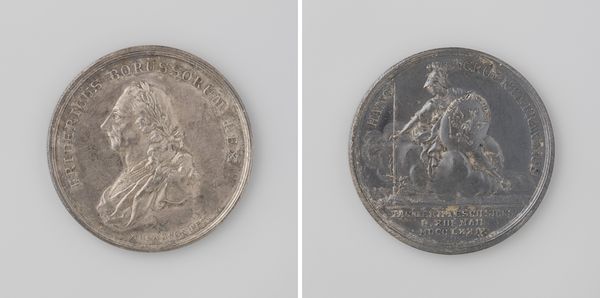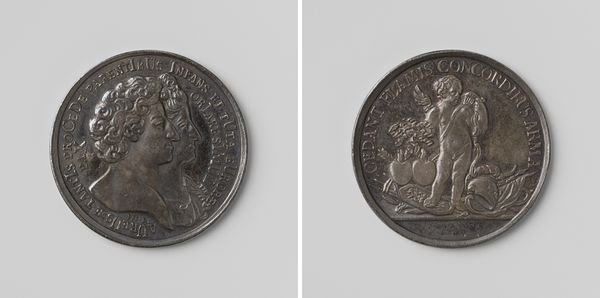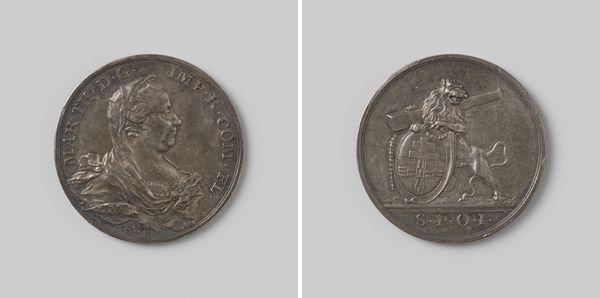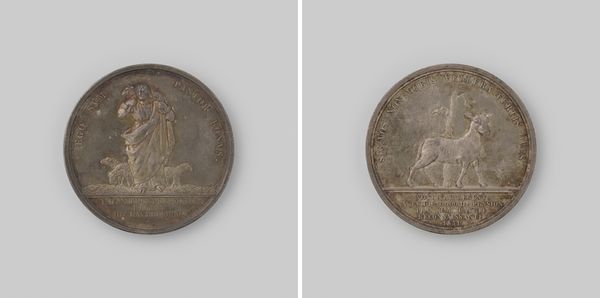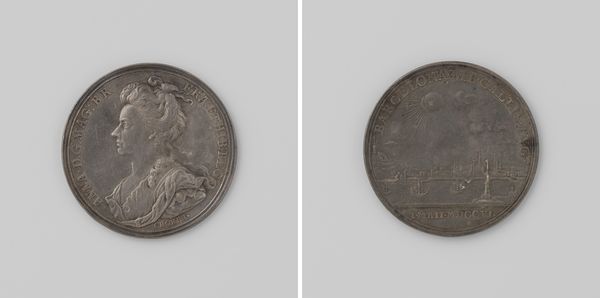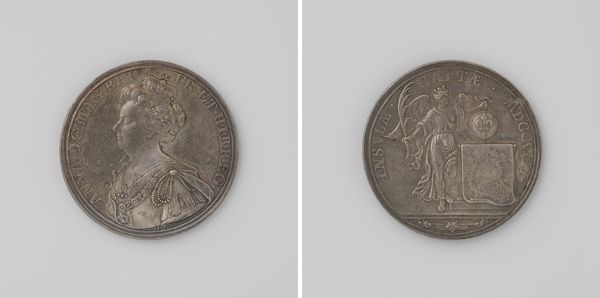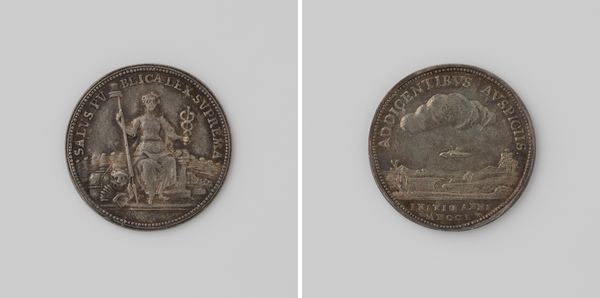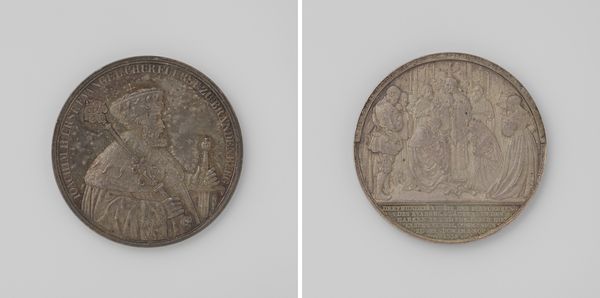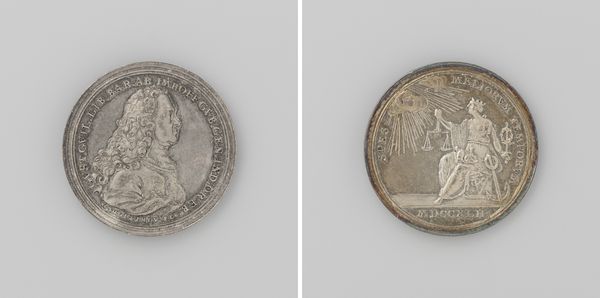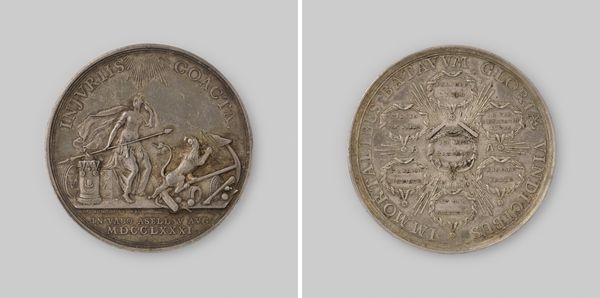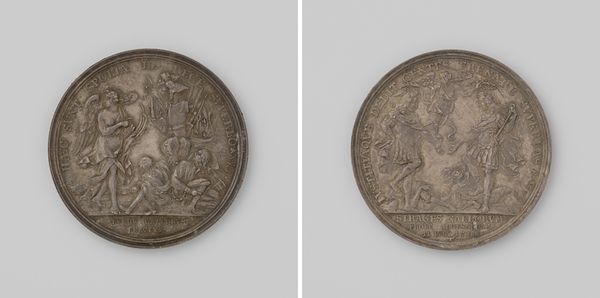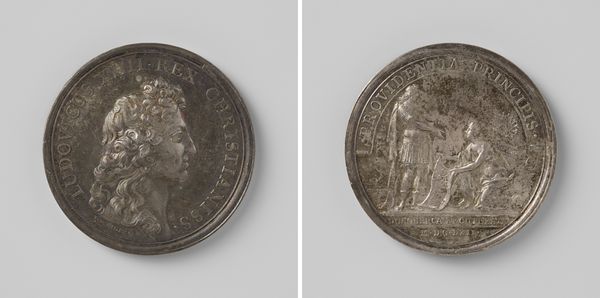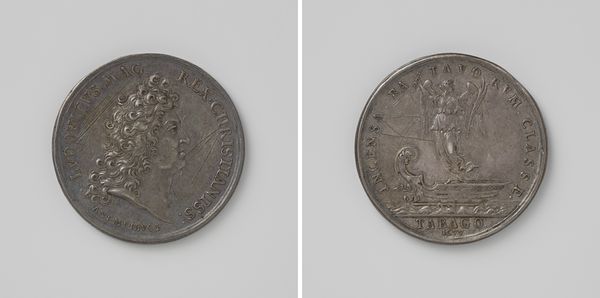
Erkenning van de onafhankelijkheid van de Verenigde Staten van Amerika door de Staten-Generaal der Verenigde Nederlanden 1782
0:00
0:00
johangeorgeholtzhey
Rijksmuseum
carving, print, relief, bronze, sculpture, engraving
#
medal
#
neoclacissism
#
carving
#
allegory
# print
#
sculpture
#
relief
#
bronze
#
sculptural image
#
sculpture
#
carved
#
history-painting
#
engraving
#
statue
Copyright: Rijks Museum: Open Domain
Curator: This is a fascinating medal designed by Johan George Holtzhey in 1782. It commemorates the States General of the United Netherlands' recognition of the independence of the United States of America. It's currently housed in the Rijksmuseum. Editor: My first impression is of understated power. The circular form is so elemental, the carving feels quite stark in its classicism, despite the small scale. It makes me consider the social conditions surrounding its creation and initial usage. Curator: Absolutely. The medal is rife with neoclassical allegory. On one side, we see the allegorical figures of Liberty and America clasping hands over an altar, bathed in radiant light – the dawn of a new era. Liberty, of course, is often shown wearing the pileus and America is often portrayed as Indigenous. It evokes the familiar symbolism of freedom and new beginnings, underpinned by enlightenment values. Editor: I’m curious about the specific alloy Holtzhey used and from where. The gleam hints at silver content, right? I wonder about its origins and what it signified to the original owner and user. This would affect value. To be something beyond a diplomatic acknowledgement, this object must appeal in some form beyond what it literally signifies. Curator: It’s believed to be bronze and the patina contributes much to the medal's austere beauty today. Look at the reverse side; there, a Dutch lion breaks free from its enclosure, a potent symbol of breaking free of British control and aligning themselves with fair commerce rather than old imperialism. The Dutch republic making it know they won't be the one to remain held back. The images are all linked in ways of power through the people. Editor: It really speaks to the intersection of artistry and political intention, doesn't it? I wonder how these medals were disseminated. Were they gifts to politicians? Souvenirs for wealthy sympathizers? I'd wager that the engraving process itself held significant social weight, offering clues about labor practices. Curator: Precisely. This medal serves as a material embodiment of the shifting allegiances and power dynamics of the late 18th century. The imagery used sends clear visual signal in line with the neoclassicist styles adopted by revolutionaries throughout Europe. Editor: Looking at it this way, it reveals not just diplomatic recognition but a carefully crafted material representation of geopolitical and economic aspirations. Thanks to its design and original form, a mass produced item speaks so plainly to a monumental historical shift. Curator: And as an iconographic document, it reveals the ways new national identities were constructed through symbolic language. Editor: Right, objects like these highlight material and meaning entwined in a tangible way.
Comments
No comments
Be the first to comment and join the conversation on the ultimate creative platform.
